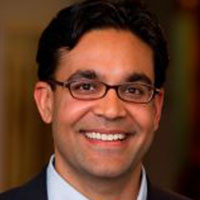Women’s limited work participation in India is not only of economic significance, but also has ramifications for their well-being and societal status. Based on a household survey in four north Indian urban clusters, this article finds a strong association between women’s work status and household decision-making agency, adding another dimension to our understanding of the link between women and work in India. However, the strength of this linkage is uneven and contingent on location, work categories, decision domains, and decision types.
This is the second of a five-part series on ‘Urbanisation, gender, and social change’.
In India, women are three times less likely than men to participate in the workforce (Fletcher et al. 2017). Women’s limited participation in the economy is not only a matter of economic significance, but also has ramifications for their well-being and status in society writ large. For instance, research has found that economic empowerment can significantly increase the degree of human agency women enjoy (Duflo 2012). However, several studies find that the connection between work and agency is non-linear and subject to numerous caveats (Chang et al. 2020, Donald et al. 2017).
In a new study (Maxwell and Vaishnav 2021), we examine the connection between women’s ability to participate meaningfully in household decisions and their labour force participation. Our conclusions draw on a unique survey of 15,000 households, randomly sampled across four north Indian urban clusters: Dhanbad (Jharkhand), Indore (Madhya Pradesh), Patna (Bihar) and Varanasi (Uttar Pradesh)1.
Decision-making inside the home
While the degree of agency a woman enjoys can be measured in innumerable ways, one common approach is documenting women’s influence on everyday household matters. Faced with finite household resources and variation in the preferences of household members, a woman’s ability to negotiate how decisions are made and resources are budgeted is a reasonable proxy for the personal agency she enjoys.
Our survey asks men and women in the same household about three decision-making domains within the household – cooking duties, children’s education, and the purchase of expensive household appliances. Within each of these three domains, in turn, the survey asks about three types of decisions: (a) Who makes decisions in this domain?; (b) Who has the most say?; and (c) Who has the most say on finances related to that issue? Our analysis relies on women’s responses to these questions.
We find that there is significant variation in decision-making agency across decision domains (Table 1). Women report much higher levels of agency when it comes to cooking – 56% of women report that they decide what is cooked daily, and 41% report they have the most say. These numbers drop significantly for decisions on their children’s education (20% of women decide, and 22% have the most say), and decline even further for expensive household purchases (just 6% of women decide, and 8% have the most say).
Table 1. Women’s decision-making, by city, decision domain, and decision type
Total (%) | Dhanbad (%) | Indore (%) | Patna (%) | Varanasi (%) | ||
Cooking | Decides | 56 | 51 | 57 | 58 | 57 |
Most say | 41 | 38 | 41 | 47 | 41 | |
Budget | 21 | 12 | 24 | 22 | 25 | |
Children’s education | Decides | 20 | 18 | 19 | 26 | 19 |
Most say | 22 | 28 | 17 | 27 | 17 | |
Budget | 16 | 11 | 15 | 17 | 15 | |
Appliances | Decides | 6 | 6 | 5 | 6 | 5 |
Most say | 8 | 16 | 4 | 9 | 4 | |
Budget | 6 | 6 | 6 | 7 | 6 |
Second, there is systematic variation across decision types – in each domain, women report the least amount of agency when it comes to budgetary issues. Just 21% of women report having the most say over how much money is spent on cooking for the family – a share that is significantly at odds with their control over what is cooked daily. The same pattern holds true for spending decisions regarding their children’s school. For appliance purchases, the overall level of agency is markedly depressed across all three decision types.
Low levels of work participation
We use a detailed employment module to explore variation across work categories because not all forms of work are equal. In terms of defining work, our survey asks women, whether in the last one year, they have: (a) Worked for pay or for goods (non-household work); (b) Worked in any of the household’s non-farm businesses (household non-farm work); (c) Worked on the agricultural land owned or cultivated by the household (household farm work); or (d) Worked in any of the above.
Twenty-five percent of women in our sample report being engaged in some type of work in the past year. In both Indore and Varanasi, roughly 28% of respondents were classified as working, according to our three-fold definition. In Patna, this share is 25%, while in Dhanbad, only 17% of women worked, the lowest proportion in our area of study. Across cities, 9% of women report working for pay or goods, 3% report working on a non-farm business, and 14% report engaging in agricultural work.
Do work and women’s agency go together?
Our data suggest that there is a distinct agency advantage to working women across the board (Table 2). The magnitude of this advantage is most pronounced in cooking – an area where women are already more likely to identify as having the most influence – but is relatively muted in the other two domains. For instance, working women are 12% more likely to make decisions about cooking, but just 3% more likely to decide about appliance purchases. The agency advantage working women enjoy is, in relative terms, also greatest in the cooking domain on the matter of who has the most say over meals and who determines cooking-related finances. The limited agency women enjoy over expensive appliance purchases reinforces a pattern we see in budget questions across domains – women, regardless of work status, are the least likely to have the deciding say on spending matters.
Table 2. Work and decision-making agency, by decision domain and decision type
Percentage not working and makes decision | Percentage working and makes decision | ||
Cooking | Decides | 53 | 65 |
Most say | 39 | 48 | |
Budget | 18 | 30 | |
Children’s education | Decides | 19 | 24 |
Most say | 22 | 24 | |
Budget | 13 | 19 | |
Appliances | Decides | 5 | 8 |
Most say | 8 | 10 | |
Budget | 5 | 10 |
Variation across work type
For each of our four definitions of work, we look at the women’s work advantage for each of our four cities across the three domains. These distinctions create 48 possibilities, the agency advantage accrued to working women is positive in 42 of them (Table 3). Agricultural workers exhibit the weakest positive return to agency. Not surprisingly, women who work for salary and pay (presumably, this includes many who work outside of the home) appear to have the greatest agency advantage. This difference lends credence to the notion that working outside the home is linked to the most agency for women.
Table 3. Work advantage, by city and work category
Dhanbad (%) | Indore (%) | Patna (%) | Varanasi (%) | ||
Any work | Cooking | 6 | 9 | 20 | 9 |
Children’s education | 7 | 0 | 12 | 0 | |
Appliances | 2 | 4 | 6 | 4 | |
Non-household work | Cooking | 7 | 9 | 17 | 9 |
Children’s education | 1 | 6 | 9 | 6 | |
Appliances | 6 | 7 | 7 | 7 | |
Household non-farm work | Cooking | 5 | 11 | 17 | 11 |
Children’s education | 6 | 2 | 10 | 2 | |
Appliances | -2 | 4 | 3 | 4 | |
Household farm work | Cooking | 5 | 5 | 19 | 5 |
Children’s education | 3 | -4 | 10 | -4 | |
Appliances | -2 | 1 | 3 | 1 |
Multivariate analyses, controlling for a host of individual and household-level variables, confirm our core findings. Work remains significantly associated with greater levels of agency. However, the type of work clearly matters – work outside of the household is the most connected to enhanced agency, while agricultural labour offers the least payoff in agency.
One household-level variable that deserves special mention is a woman’s position in the household. In our analyses, wives of the household head emerge in the strongest position, exhibiting significantly higher levels of agency across all three categories. Daughters-in-law, on the other hand, have the least agency (for cooking and household purchases). There is no statistical difference between the agency of mothers and daughters across domains.
Concluding thoughts
Our analyses, by design, cannot establish a causal relationship between female economic empowerment and women’s agency inside the home. However, we do find a strong association between women’s participation in the labour force and household decision-making agency. However, the strength of this linkage is uneven and contingent on location, work categories, decision domains, and decision types.
Two immediate questions deserve deeper exploration. First, why is a woman’s ability to make financial decisions that impact other family members limited, regardless of employment status? It is possible that working women’s ability to wield greater decision-making power on spending matters inside the household is conditional on possessing an independent source of funds under their direct control (Field et al. 2019). In other words, perhaps working women enjoy higher agency regarding financial decisions only when they can exert greater autonomy over proceeds derived from their own work.
Second, our study shows that, regardless of women’s work status, men remain more likely to make the final decision on household budget across decision domains. This implies that the strongest gains from women’s paid labour force participation may be in greater household purchasing power, rather than women’s independent financial agency within the household.
The next part in the series will discuss women’s mobility and labour force participation.
Note:
- Although our study draws on survey data from urban clusters, our sampling design allows us to compare households in the urban core as well as surrounding rural and peri-urban areas.
Further Reading
- Chang, W, L Díaz-Martin, A Gopalan, E Guarnieri, S Jayachandran and C Walsh (2020), ‘What works to enhance women’s agency: Cross-cutting lessons from experimental and quasi-experimental studies’, J-PAL Working Paper.
- Donald, A, G Koolwal, J Annan, K Falb and M Goldstein (2017), ‘Measuring Women’s Agency’, Policy Research Working Paper Series 8148.
- Duflo, Esther (2012), “Women Empowerment and Economic Development”, Journal of Economic Literature, 50(4): 1051-1079.
- Fletcher, EK, R Pande and CT Moore (2017), ‘Women and Work in India: Descriptive Evidence and a Review of Potential Policies’, HKS Faculty Research Working Paper Series RWP18-004.
- Maxwell, Megan and Milan Vaishnav (2021), ‘Working Women’s Decision-Making Power at Home: Evidence from Four North Indian Urban Clusters’, Urbanisation.
-
Social media is bold.
Social media is young.
Social media raises questions.
Social media is not satisfied with an answer.
Social media looks at the big picture.
Social media is interested in every detail.
social media is curious.
Social media is free.
Social media is irreplaceable.
But never irrelevant.
Social media is you.
(With input from news agency language)
If you like this story, share it with a friend!We are a non-profit organization. Help us financially to keep our journalism free from government and corporate pressure

















0 Comments